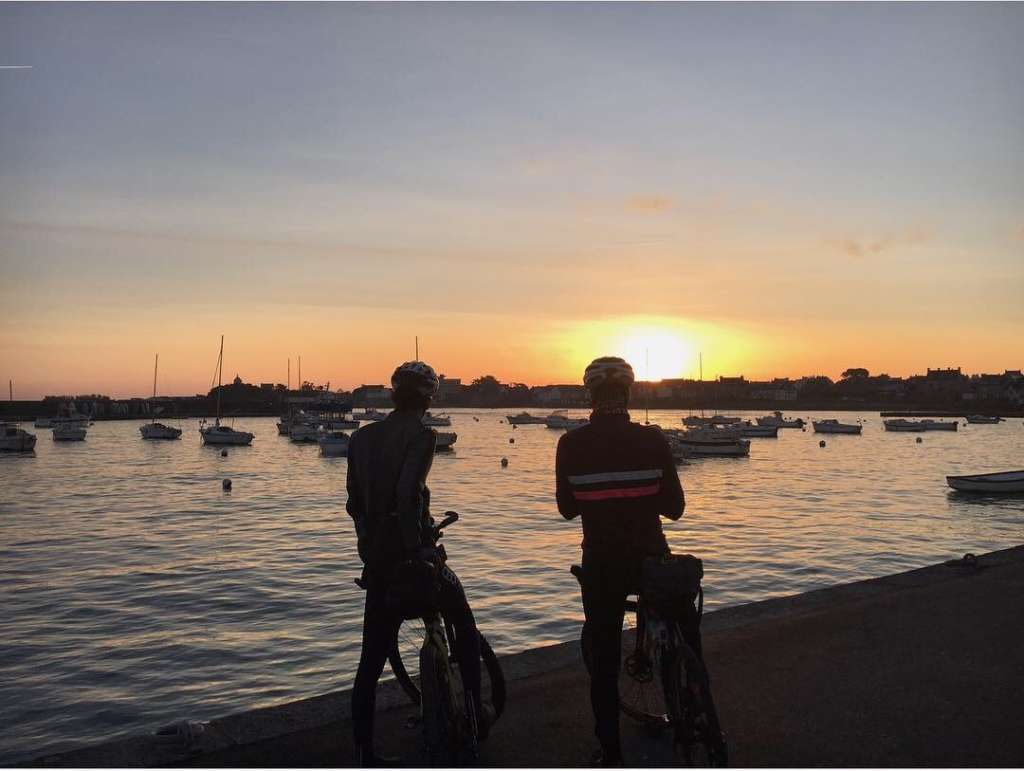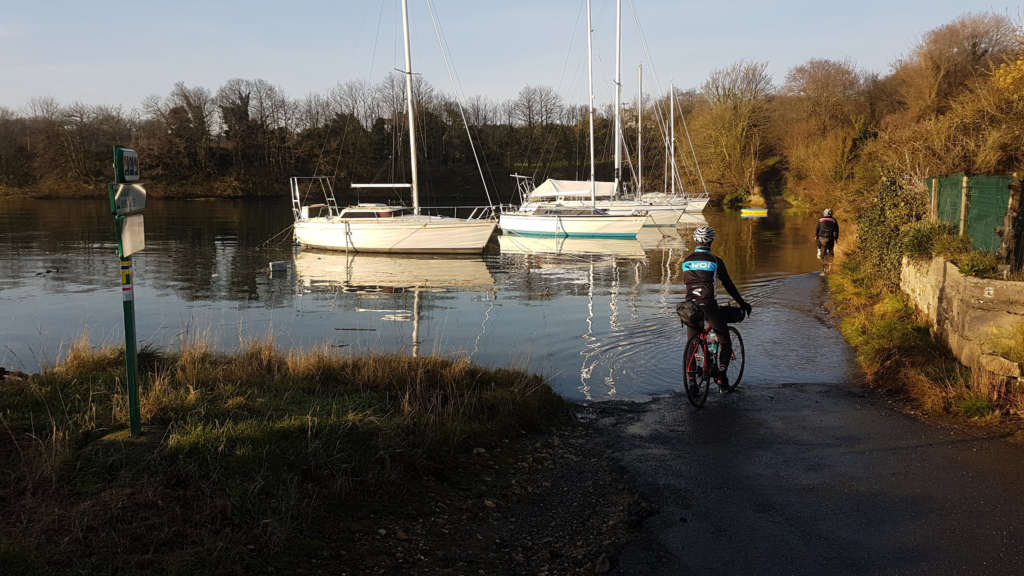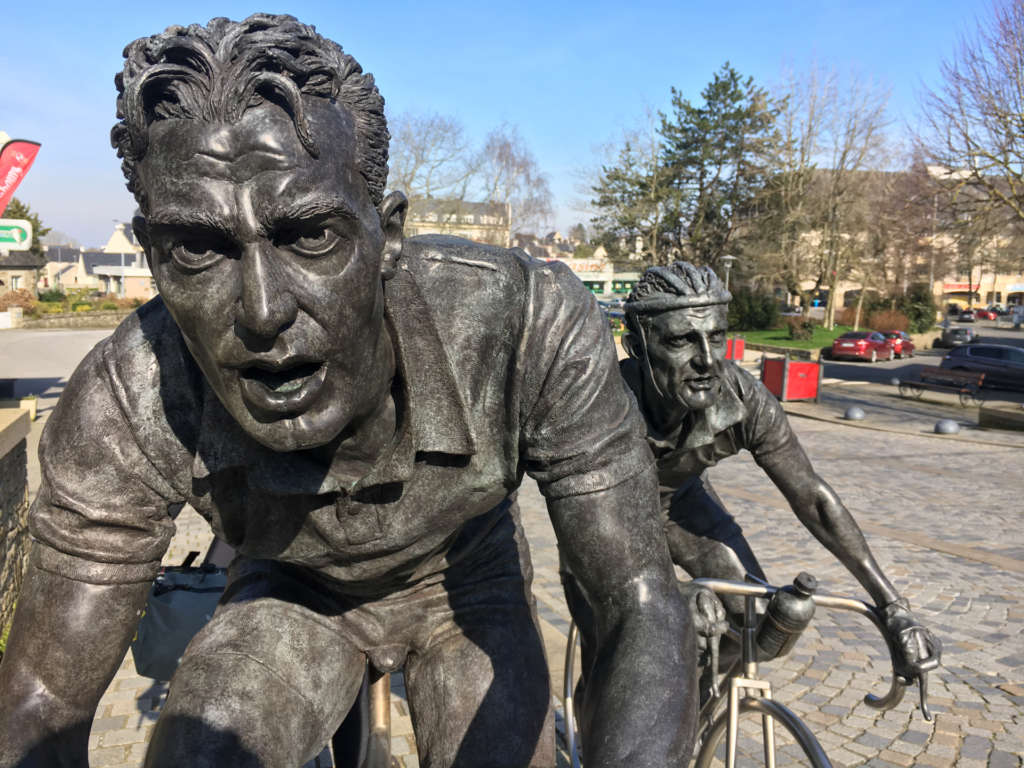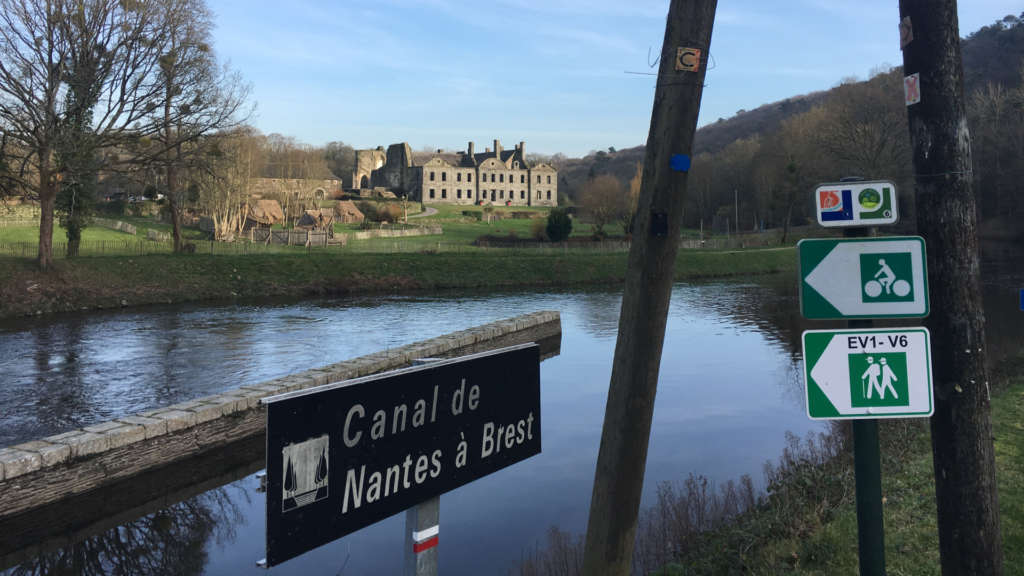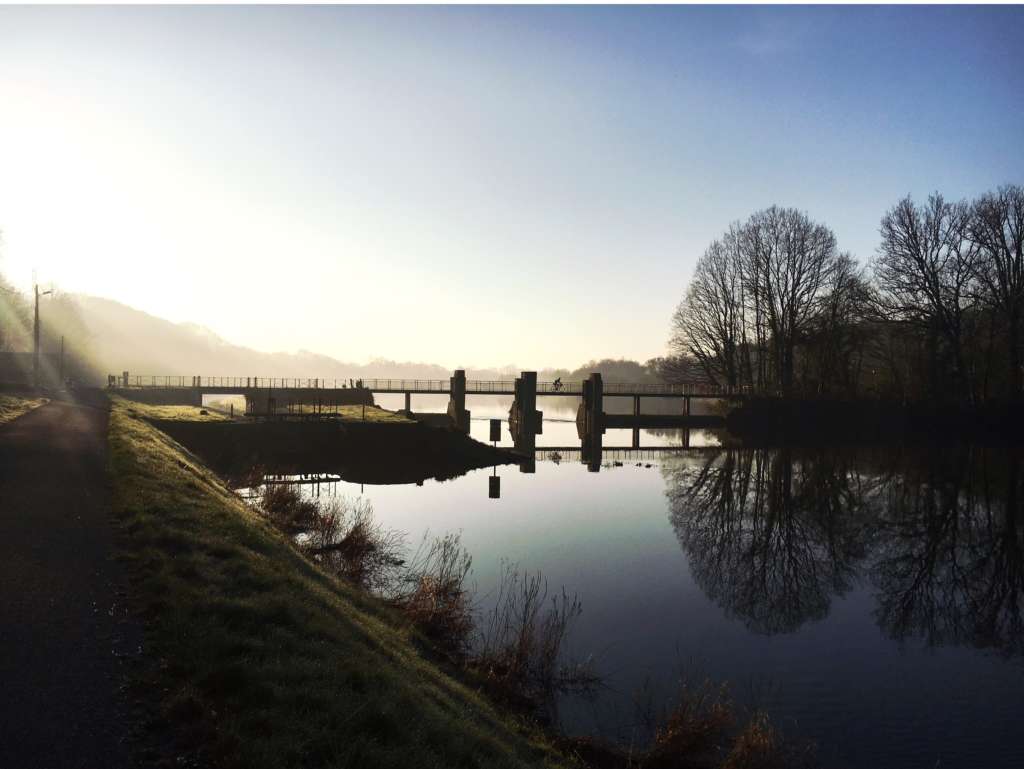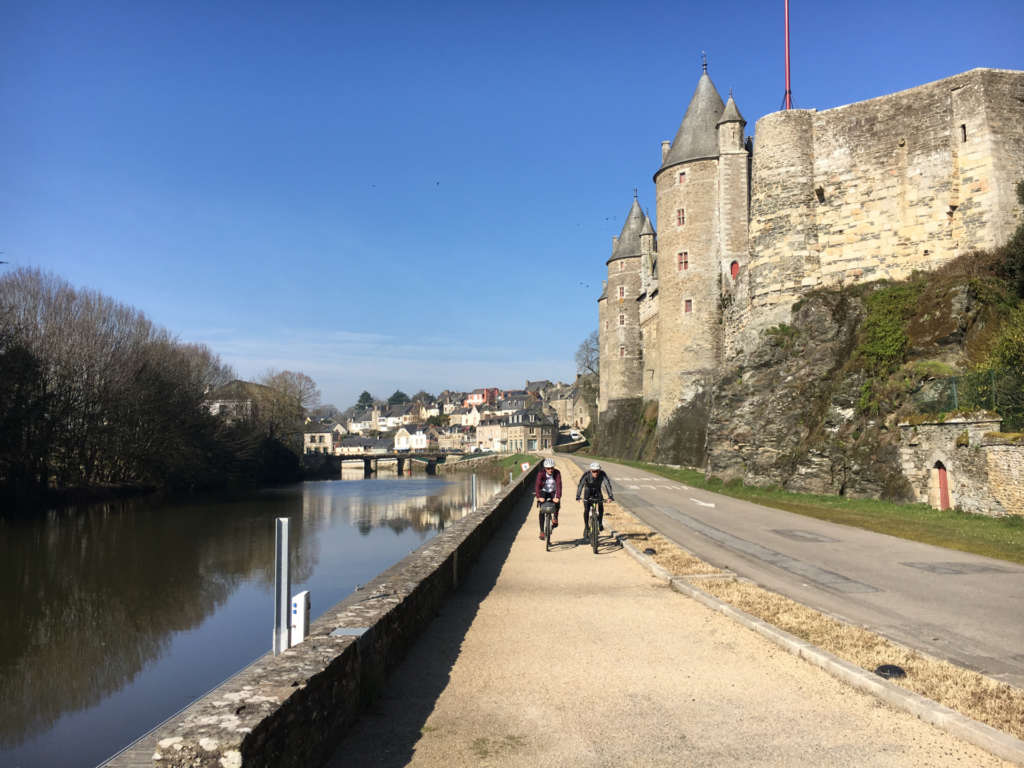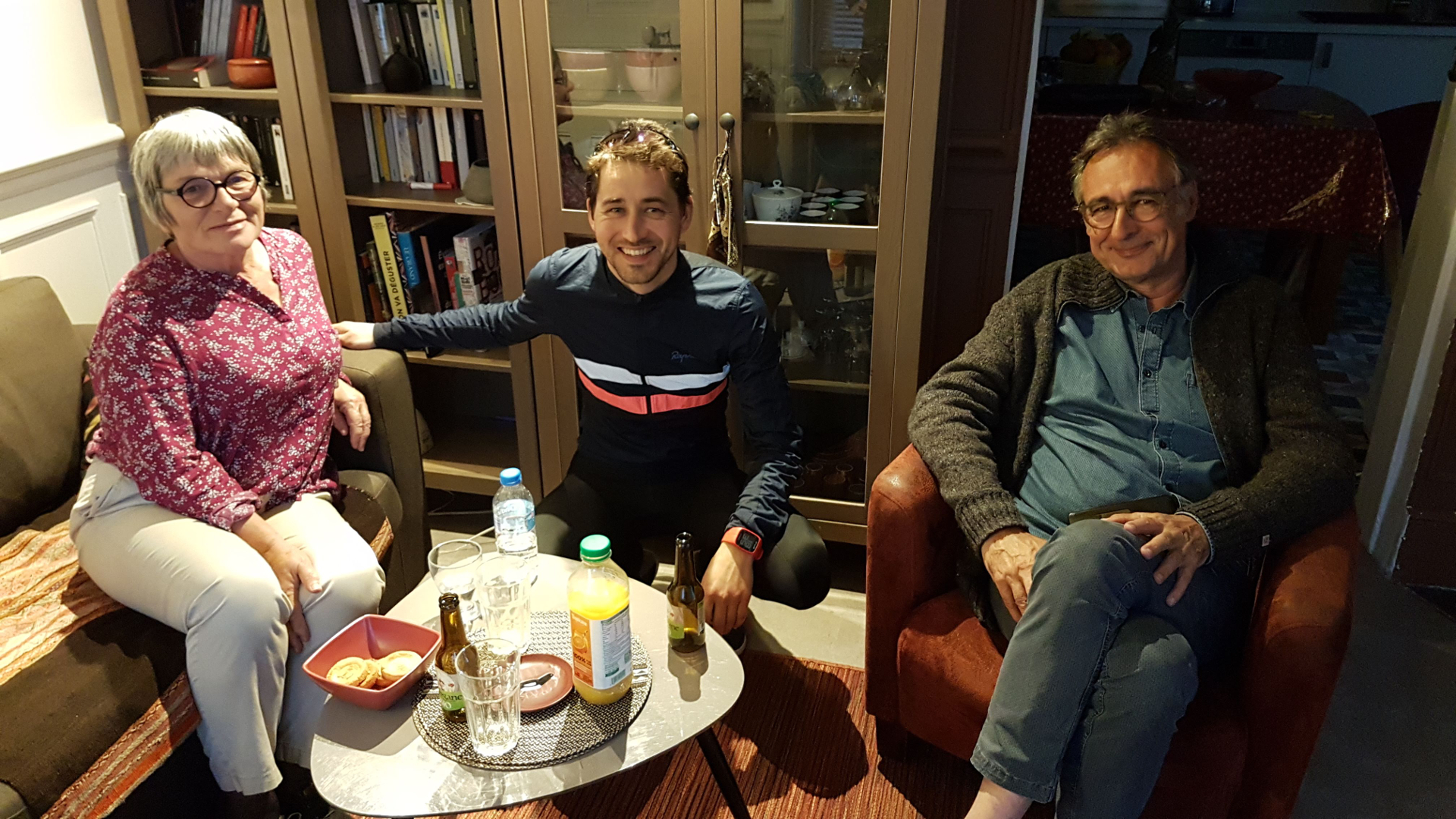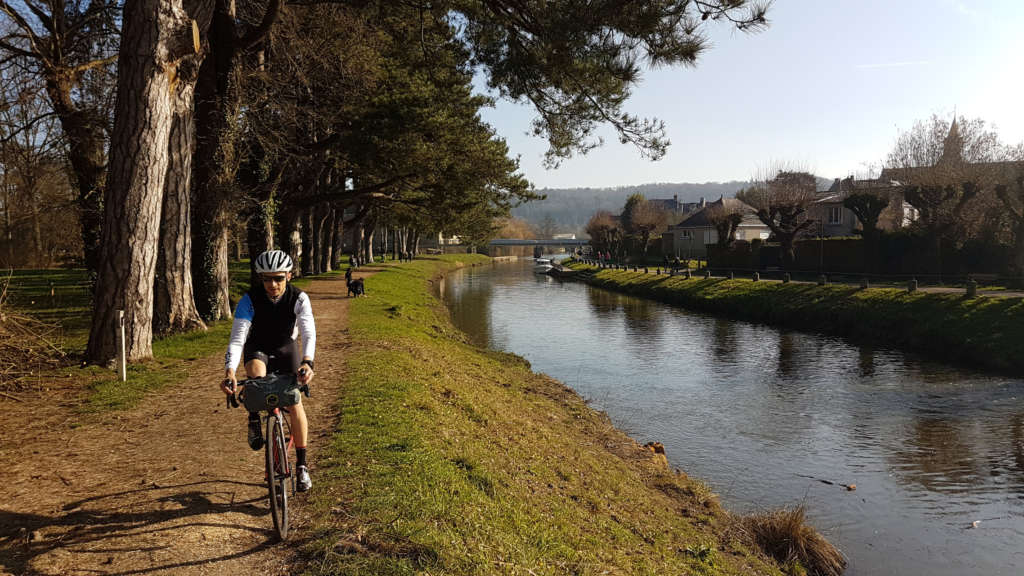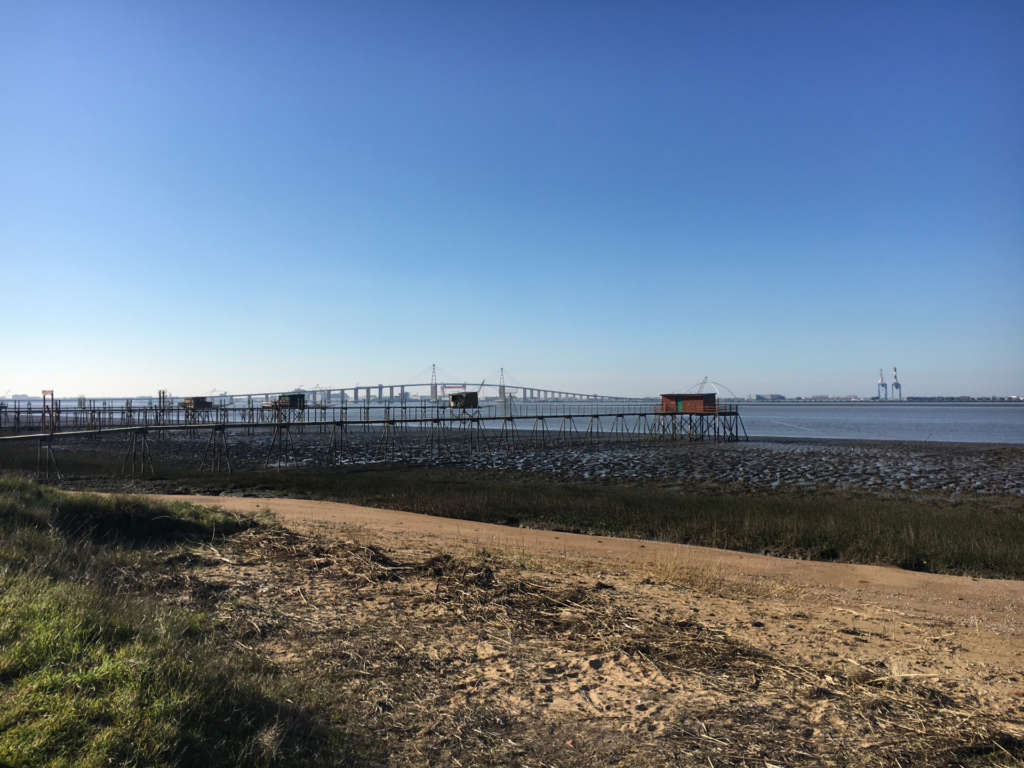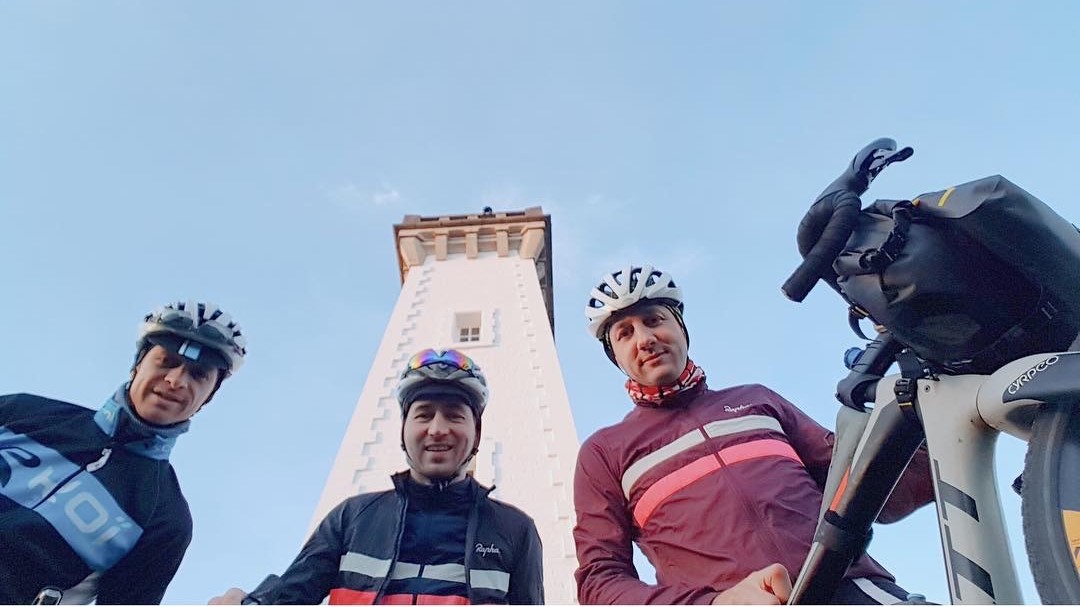Bike crossing of Brittany on the Vélodyssée
17 February 2020
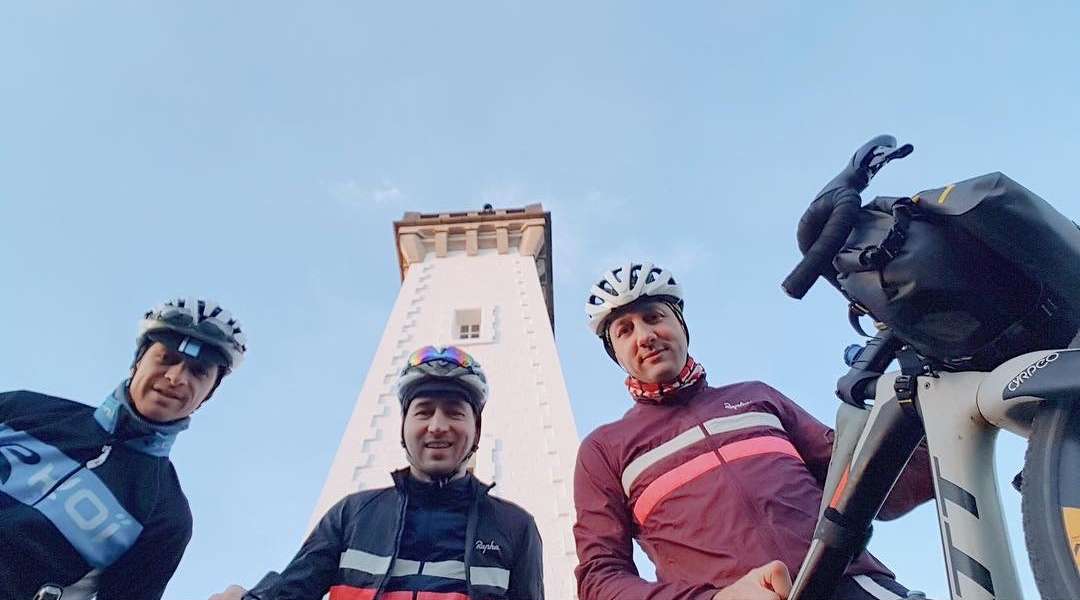
The story of crossing Brittany by bike
The Abicyclette Voyages travel agency team, specialized in organizing bike trips in France & Europe, set a challenge for themselves: crossing Brittany by bike in the middle of winter in 3 stages. The brave travelers who carried out the adventure recount their gravel journey:
A 3-day challenging gravel epic on the Vélodyssée:
The “Atlantic Channel” that we wanted to ride offered us the opportunity of crossing Brittany by bike from North to South.
A “Sea to Sea” is always a journey, an adventure whether it be 20, 200 or 2,000 km.
The idea of taking historic routes in Brittany seemed great. We were interested in exploring the famous Vélodyssée, on which we organize dozens of trips each year for bicycle travelers, who come from all over the world to take a journey far from traffic, along rivers and canals.
It seemed to us that we were preparing for a winter challenge by organizing our 3 stages making up a total of 490 KM, from February 22 to 24. We were mistaken, winter is a memory that we will tell our grandchildren. From 2°C at the start to 18°C in the middle of the afternoon, we went through a heat wave. These pleasant conditions for a cyclist are not always in line with the global and polar ideal. In the meantime, we must admit that it was good to leave the rain jacket at the very bottom of our bikepacking bag.
Gravel biking is a new type of cycling that offers the advantage of going almost everywhere, much like a MTB, while keeping the light weight and efficiency of a road bike. The ideal companion for covering long distances on tracks of different surfaces and conditions. The new bikepacking bags offer the possibility of comfortable autonomy while traveling light. Autonomy without losing any of its sporting sensations.
It was our modern way of crossing Brittany by bike on historic routes newly dedicated to sustainable touring.
The first stage of La Vélodyssée
The rendezvous is at sunrise on the port of Roscoff, start of the 1st stage of La Vélodyssée, at the foot of the lighthouse. The daylight is superb and reinforces our motivation to start the journey.
Facing the sea, we watch this large flaming red sphere rise above the English Channel and the sailors’ houses.
Following the very good signposts of La Vélodyssée, we weave our way through the small roads of the Onion Johnnies, the onion sellers who are part of the reputation of Leon’s market gardening. Today there is a strong smell of cabbage that surrounds these charming little roads bordered by low stone walls where the grass grows in the middle.
It’s a big rolling resistance coefficient weekend, 114 exactly.
We cross Morlaix. Under the viaducts, we feel small. They are impressive with their tons of granite and steel.
We leave the scent of croissants behind and take the little alleys that La Vélodyssée points out to us. Leaving the city is challenging and allows us to climb on an old railway track, converted into a greenway, which connects the sea to Carhaix and to the Nantes-Brest Canal.
In Carhaix, hunger calls. The Coreff brewery, opposite the train station, which is now exclusively for buses, ends up convincing us that the city is the place to refuel. It is 17°C, probably even more under the sun. Yes it’s February 22nd in Brittany…
Brittany, land of cycling
Near the terrace where we are served our refreshments, we find Bobet, Hinault, Robic and a few others …
We pay tribute to the Breton bike champions who have marked the history of cycling, who contribute to the fact that this Brittany that we are crossing today is undeniably a land of cycling.
Carhaix has always been a crossroad. From Roman times when the city was a capital. Today for cyclists who have to decide between Route 7 Brittany which descends on Concarneau (“Look! Another Ocean Sea to ride.”) and La Vélodyssée. Much to our surprise we found a sign indicating “Nantes”. More than 330km from the ancient city of the Dukes of Brittany, we expected another direction. We are not sure that on all the other road signs that Carhaix has, we can find one with the direction to Nantes! However, that could not be clearer, Nantes was on the right, we had to reach out and follow the path. We found this sign again when we arrived at the water’s edge. On the right, Brest, on the left, Nantes and the first pedal strokes of the 286.2 km to be traveled along the famous Nantes-Brest Canal.
The Nantes-Brest Canal
The route is flat. Well almost, unless it just isn’t really. The flow of water through this hilly landscape certainly asked great engineers for calculations that we would not dare to do today with a computer.
The canal locks form stairs. On the towpath, we must follow this climb. The curves and the height of the steps prevent us from having a global view on the effort needed and the number of steps that remain to be conquered. A boost after each lock to get to the next one gives us the opportunity to dance on our bikes, thus relieving our hindquarters, but also our shoulders which stiffen over the kilometers.
We reach the summit. It spans a distance of 3km and takes the name of Tranchée des Bagnards (Convict’s Trench). Without them and their efforts far superior to what we do today on our bicycles there would be no continuous connection from Nantes to Brest.
Imagine the site: 700 people, for 9 years, digging 23m deep and 100m wide. No, really, it wasn’t better before.
We are soon taking advantage of a false-flat, yes, one more, going down this time, to connect the Abbey of Bon Repos. The large facade is impressive. It must be said that for kilometers, we only come across charming little lock keepers. The imposing building no longer has windows. In the distance, from the canal, it looks like a ghost house. It captivates, it intrigues, it does not leave one indifferent. It’s a surprise for the majority of our travelling companions, we’ll sleep in the old outbuildings a few meters from this mysterious abbey.
We find there exactly what the place indicates, what we came to seek, a good rest.
Stage 2: from Saint-Gelven to Redon
The abbey was still covered in darkness when we woke up. This morning, we will not have the mildness that the English Channel brings to the Brittany coast. We pass over the porch of this unique place and continue our Brittany bike crossing. We were warned, the ride starts with a steep hill, the warmup is invigorating. Our route this morning runs parallel to the towpath.
A few kilometers after the abbey, it has been drowned since the 1930s, under the Lac de Guerlédan, necessary for the construction of a hydroelectric dam. On the heights, we find an old railway track from where we enjoy a glowing sunrise. From station to station, it takes us to Mûr de Bretagne. The now famous Côte de Méné Heiez on the Tour de France is only a few hundred meters away. But it’s not on the program for our crossing. We will come back.
Then we plunge into the Morbihan territory. This departmental border is difficult to identify precisely without a map. Landscapes and layouts are changing. We are slowly leaving northern Brittany for the south.
From the foot of the dam, we find the Nantes-Brest Canal which in its submarine crossing meets the Blavet, the river which crosses Brittany up to Lorient. Its flow is more turbulent, more natural than what we rode along before Bon Repos.
On our bikes, we make the most of the colors of this beautiful winter morning.
Here and there, a few remains of an industry from another century, with such eye-catching architecture, charms us.
Pontivy offers us the first coffee of the day, on the terrace and in the sun. It’s our first sandwich too. Breakfast was light this morning.
Josselin Castle
We then begin a succession of 3 stages of 25 kilometers, where the stage cities are the occasion for a tourist and/or gourmet break. 25 km to Rohan and the banks of the Oust, 25 km to Josselin and its castle, 25 km to Malestroit classified as a small town of character. When there are 150 km to travel along a canal, without relief, there are regular stages that feel good to move forward and forget the monotony.
The castle of the dukes of Rohan in Josselin directly overlooks the canal as if to protect it. It’s amusingly imposing. We bypass it, climb in the city center by the historic alleys in search of a bistro with a terrace service by the 18°C temperature.
The Duchesse Anne restaurant – we no longer count them in Brittany – presents a south-facing terrace and a dish of the day which is unanimous. We will especially remember the dessert of the day on February 23: galette des rois frangipane (a pastry traditionally eaten on January 6th) … Definitely, there is no season!
Our great hosts, Michèle and Frédéric
Lock 18 bis symbolizes the end of this stage. A few minutes after 5pm, Michèle and Frédéric are waiting for us in their Yellow House. Used to welcoming our bicycle travelers during the summer season, we are pampered in turn by this oh so generous and warm couple.
Breton beer has been waiting in the fridge since the day before in anticipation of our arrival. The refreshment is very appreciated and very soon we are talking about how to change the world. Our guests comfortably install us in their beautiful, colorful and carefully decorated rooms. They recommend a restaurant, a small establishment with 3 or 4 tables that must be reserved, which Sébastien is quick to do.
We find ourselves in a very unique flea market restaurant where everything is for sale, the chair on which we are sitting, the table on which our second beer of the evening is served(La Merienne, a local micro-brewery), the plate on which we eat .
Here also our journey brings us in the midst of treasures from the past. On the menu, generous mountain tartines that have the nice scent of other alpine adventures and mountain huts. Fully satisfied, we go to our rooms, turn on the alarm clocks at 5.30 am, and try to sleep.
Heavy digestion, nervous fatigue of the first 2 days, excitement or stress, it depends, more than 200 km await us on next day’s stage. Anyway, everyone counted the passing hours and could only spend a hectic night.
Stage 3: from Redon to Bourgneuf-en-Retz
You need to be very persuasive to take 3 friends on a 214 km stage – on paper, the counter went up to 220.
Michèle and Frédéric, freshly back from a trip to Southeast Asia for several weeks, had not yet fully moved to French time. So it was undoubtedly less difficult for them to get up, in order to provide at 6:00 am one of the best breakfasts that it is possible to put together. We are touched by the attention, care and generosity of our hosts who responded far beyond our expectations to the challenge that is ours on this day.
We turn on our lights, it’s 7 a.m., it’s dark as night, the start is signaled. Return to the edge of the canal, towards Nantes. The feelings at night are always surprising, increased tenfold because of the eyes bring to the mind information that is incomplete, partial, to sometimes be corrected. The feelings get stronger. Little by little while we chase the coypu (semi aquatic rodents) for which the tow is a fine sand beach, the sun rises offering the first orange glow of the day.
Despite a path of uneven quality over these first fifty kilometers, we quickly arrive in Blain. The 4 of us are still digesting breakfast, we decide to continue a little further before treating ourselves to coffee and treats.
In the group, fatigue is felt, also doubt. Kilometer 88, this means that there are still 126 to go.
Some of us wonder if the body or the head will be able to go to the end, without too much suffering, without spoiling the pleasures of a day on a bike. A well-stocked plate would have been good for morale.
Nantes, city of the Dukes of Brittany
The route since we left Nort-sur-Erdre and the Nantes-Brest Canal was very fun, a mixture of paths of various widths and small roads. After more than 280 km in a straight line on the tow, we are enjoying the turns which follow one another by pushing the pace each in turn. At this rate, Nantes will quickly be reached.
We ride up to the historic and medieval quarter of the city of the Dukes of Brittany, Bouffay. We sit on a terrace, without searching too hard. There are days when it’s important to eat fast, too bad for food reviews. Is it the delicious crumble or having our dinner in the panniers? Anyway, morale is at its highest level and the team is finally ready to ride towards the ocean, 70km further.
Our journey on La Vélodyssée continues. The route is spread out on the southern hillside of the Loire. Through the villages and boroughs dominating the Loire Valley, we discover a more hilly path than we had imagined. The weight of the saddlebags becomes heavier when it comes to climbing the hill, but it also makes it a fun route with a shift of small panoramic roads and charming alleys.
We finally descend for good and reach the Martinière canal. A large flat straight line, water on the left, water on the right, well, it’s amusing, it reminds us of distant sensations.
The Saint-Nazaire bridge begins to take shape on the horizon. These two high red and white pillars herald the Loire estuary. The ocean is near. The Sea – Ocean, soon completed. We get lost in Corsept and lose 20 minutes. We start looking at the watch, it’s getting close to 4 p.m., 3 hours before the last train.
Continuing the bike crossing of Brittany
Our past adventures always had an important part of preparation for the itinerary, searching for roads, paths or all terrain singletracks. For the first time, we are on a fully marked, signposted route. Also, this time, we did not take the time to precisely configure our GPS tracks. Consequently, between the voluntary detours in Nantes and involuntary detours of Corsept, our odometers were no longer enough to tell us with precision how many kilometers we had left to travel to the border and the Bourgneuf en Retz train station.
We arrive to Saint-Brévin les Pins. The ocean is facing us, just a few tens of meters away, set on a beautiful sandy beach. We are enjoying our first victory.
Morale is high, the Nantes – Saint-Brévin stage will have been quickly put behind, the final finish line, the peak of our mountain, is near and seems to be accessible now. However, a question remains, how many kilometers left are there exactly?
Using our last forces we start a race against time. A mix of stress and excitement rises gradually and pushes us to energetically get back in the rhythm after each intersection. Are there still a lot of intersections up to Bourgneuf? Yes. The route winds its way between the last historic towns and harbors in Brittany and the seaside resorts that have developed since the end of the 19th century.
To add to our uncertainty of the remaining distance, the panels of La Vélocéan, more numerous but common than those of La Vélodyssée, were playing with us, announcing inconsistent distances from one to the next.
Brittany bike crossing: We made it!
Pornic. We pass the symbolic mark of 200 kilometers. In the distance, on the other quay, there’s a long queue already formed in front of the Fraiseraie, the city’s famous ice-cream shop. We will have to come back for the ice-cream.
In the village of Moutiers en Retz, for the first time, it’s no longer a city that the signposts of La Vélodyssée show us but an actual border: “Vendée 6 km”. Our Brittany bike crossing summit is near, we now know how far ahead of us.
Our last two kilometers border the ocean. And as a final reward, the sun offers us the privilege of setting on the Atlantic right now. On the saddle, from sunrise to sunset, we realize the duration of the struggle. Even though our tired bodies have found their rhythm and are advancing at more than 30km/h. At this speed we reach Port du Collet on the waters of the Falleron. This modest river on which rests a modest border: administrative between Loire Atlantique and Vendée; and historic: that of Brittany …
«Prepare your passports my friends, we made it!»

